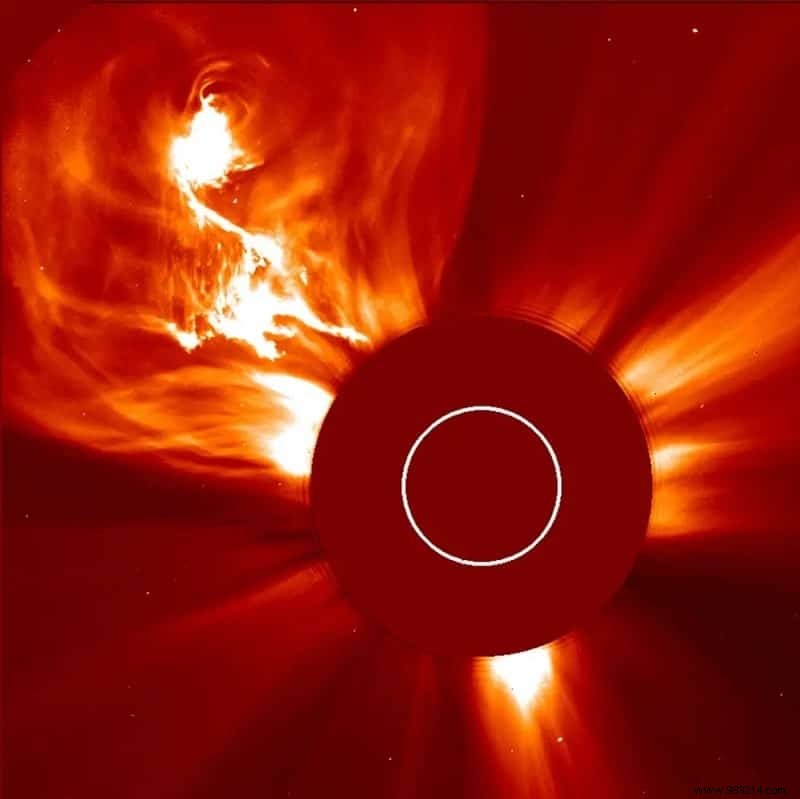The solar wind is a flow of particles emitted by the Sun that travel throughout the Solar System. First proposed in the 1950s by University of Chicago physicist Eugene Parker, solar wind is visible in the halo around the Sun during an eclipse and sometimes when particles hit Earth's atmosphere; like the polar aurora borealis. While the solar wind shields Earth from other harmful particles from space, storms can also threaten our satellite and communications networks.
The surface of the Sun is extremely hot, around 5500°C — but its atmosphere, called the corona, is more than a thousand times hotter. The Sun is also an active star; magnetic eruptions and reconnections are frequently visible. The corona is so hot that the Sun's gravity cannot hold it back, so particles are thrown into space and travel through the Solar System in all directions.
These particles, mostly protons and electrons, travel at around one million kilometers per hour through the Earth. This flow of particles, called "solar wind", has a noticeable impact on our planet.
It shields us from stray cosmic rays from elsewhere in the galaxy, but the effects of solar storms can also affect our telecommunications networks. The wind is also said to pose a threat to astronauts traveling in space, so NASA wants to better understand its properties.

Normally, the Earth's magnetic field protects us from most of these particles. But sometimes the Sun erupts, blasting a billion tons of matter into space, moving at several thousand kilometers per second. These are called coronal mass ejections (CMEs); and if a large CME were to hit Earth, the shock wave could cause chaos and damage our communication systems.
Such a scenario would generate all kinds of disturbances:planes would lose radio communication, GPS would be off by several kilometers and banking, communication and electronic systems could be neutralized. It's happened before:In 1859, a giant solar flare known as the Carrington Event disabled the telegraph and electrical systems for days.
The Northern Lights were so strong that people reported being able to read a newspaper in their light even at one o'clock in the morning. But in 1859, we weren't as reliant on electronics as we are today. A 2013 study by Lloyd's of London estimated that a similar storm hitting Earth today could cause up to $2.6 trillion in damage to the United States alone, and cause widespread blackouts and damage to electrical networks.
There are a few precautions we could take if we had advance notice, which is why engineers want to know when a solar storm is coming. Fortunately, several spacecraft orbiting the Sun take photos and send them back to Earth so NASA can monitor flares. But analysis of these images still requires an eruption to appear on the Sun's surface first, providing only minutes or hours of warning. As of now, there is still no way to predict such eruptions before they occur.
A better understanding of the solar wind is also needed for another area:space travel. Some solar wind particles are extremely energetic and could punch tiny holes in important spacecraft equipment, not to mention damage human bodies. In order to protect astronauts, NASA needs to understand the components, characteristics, and frequencies of these particles, as well as how to predict space weather for safe travel.